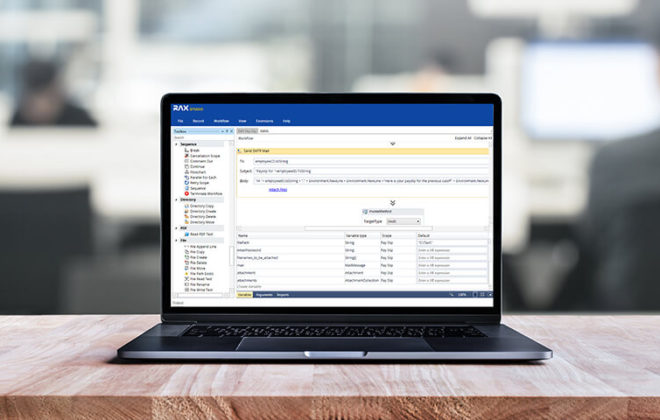Expect More Jobs and Automation after Coronavirus
The spread of the coronavirus disease triggered authorities around the world to implement varying degrees of lockdown measures which basically brought much of global economic activity to a halt. Companies across a wide range of industries, from tourism and travel, to retail, and logistics are forced to reduce operations or shut down. Meanwhile, those that are considered essential industries struggle with preventing a resurgence in outbreaks.
While most of the industries have slowed down due to the economic recession induced by coronavirus, others have turned to new-age technologies like Robotics Process Automation (RPA) to keep their businesses afloat. The use of RPA empowers industries and companies to build software robots that perform some of the more time-consuming, repetitive tasks normally undertaken by frontline workers.
Relatively, experts predict that any economic recession in the future will augment the global adoption of automation capabilities imbibing RPA. In this economic downturn, businesses will need to find new ways to increase efficiency, drive revenue, meet demands, and protect their workers.
How can automation accelerate recovery and protect us from a future crisis?
Organizations that have already leveraged RPA benefits before this crisis likely have an easier time dealing with all the trouble of setting up a remote workforce, keeping similar levels of productivity by relying on automated back-office activities, and managing influx in product demand orders.
In light of the pandemic, the pressure to shift supply chains closer to home further intensifies. While most retailers, manufacturers, and logistics providers have embraced some types of supply chain management, complete process automation and data integration remain a challenge. To achieve a smooth supply chain and optimize productivity, automation will be a critical component in this trend. RPA can automate the order processing part from product selection, manual entry of customer information, payment processing to order confirmation and update. All the while increasing accuracy and minimizing the requirement of manual labor.
While RPA has bolstered competence in supply chain and logistics industries, it has also fostered the same in healthcare institutions, especially amid the COVID-19 pandemic. RPA has enabled medical frontline workers to overcome the challenge of extensive demands for up-to-date patient data, which entails data entering, digitizing lab results, appointment scheduling, executing billing, physician credentialing, and more.
Some use cases of a foreign RPA provider showed the successful acceleration of COVID-19 testing with the help of attended software robots and the automation of test results reporting to the CDC data platform. With RPA, hospitals and healthcare institutions can more rapidly respond to issues arising as a result of the pandemic.
As the health crisis affected billions of workers worldwide, governments can leverage automation to process unemployment applications and fast track distribution of relief funds. Through automation capabilities like RPA and optical character recognition (OCR), software robots can digitize and translate all handwritten application forms into structured data that can be passed to other systems and speed up claim processing. It can also aid in the screening and delivery of payments to citizens by working within different financial platforms and transaction engines to process paperwork.
The disruption caused by COVID-19 has forced the adoption of online learning in schools and universities. As a result, more learning institutions will have to tap the power of RPA to augment such alternative learning methods which require a lot of preparations such as class scheduling, bulk licensing of remote video conference tools for online classes, distributing relevant resources for students, etc.
The efficient management in governments, public institutions, and industries will be key to nations and economies getting back on their feet, and that efficiency begins with transforming traditionally slow workflows with automated solutions.
What will be the impact of RPA on employment in the post-COVID era?
Prior the COVID-19 pandemic, strategists from leading analytics and consulting firms shared positive forecast on the impact of automation: McKinsey projected up to 30 percent of jobs in the United States of America will be automated by 2030, and “automation and Artificial Intelligence (AI) will lift productivity and economic growth, but millions of people worldwide may need to switch occupations or upgrade skills.” A study by the Pew Research Center showed more than half of their respondents agreed that while many functions will be taken over by machines by 2025, the creation of new types of job opportunities will outweigh the displaced jobs.
The upsurge in RPA adoption calls for business leaders to hire professionals with technology-driven skill sets. In fact, human resource social networking platform LinkedIn identified workflow automation, AI, and RPA among the top rising skills in the Asia Pacific region last year.
Moreover, the World Economic Forum (WEF) estimated the emerging professions resulting from automation could account for 6.1 million jobs globally from 2020 to 2022. Oxford Economics predicted that 12.5 million manufacturing jobs will be automated in China by 2030. In the aftermath of the pandemic, it could be many more
As of this writing, the United States and several countries have started to reopen their economies by gradually easing quarantine protocols and allowing a certain percentage of businesses to operate. Some experts see this move as an ominous risk but for businesses, it could be an opportunity to leverage technology to recover from the recession and to help redefine the new normal in a post-COVID world.





